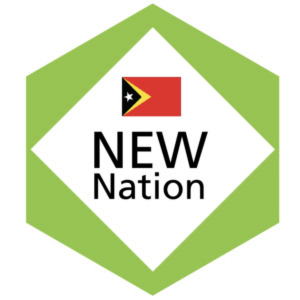Timor-Leste

The Block
Welcome Timor-Leste to Quilt of Belonging. At the time the physical Quilt was being made, Timor-Leste was not a separate nation. Its people and lands were part of the country of Indonesia and as such were included in that block. Now, recognizing the distinct identity of this new nation, we invite you to learn about Timor-Leste in the Cultural Profile, photos and videos below.
Cultural Profile
One of the youngest countries on this planet, Timor-Leste occupies the eastern part of Timor Island, smaller islands, and an exclave located in the Indonesian side of the island of Timor. Part of the Sunda Islands, a group that comprises Borneo, Java and Bali, Timor-Leste is a mountainous country with a tropical climate covering half of the country. The country’s name comes from the Malay timur, which means ‘east’, and the Portuguese leste, also meaning ‘east’. It is sparsely populated, with most inhabitants clustered in and around the capital, Dili. The population is largely of Malayo-Polynesian or Melanasian-Papuan descent, with both groups branching into smaller ethnic groups. There are also Mestiços, descendants of both Portuguese and East Timorese. The official languages are Portuguese and Tetum, an indigenous language, with 29 other languages spoken in various part of the country.
Once part of the Portuguese empire, Timor-Leste became officially independent in 2002. It has access to large oil and gas reserves in the Timor Sea, but agriculture is also a big part of the economy. Rice and maize are the main crops and cattle are raised for beef. Cottage industries such as crafts and textiles are also important soures of revenue for many East Timorese.
The country’s culture is a unique blend of Autronesian, Portuguese and Malay influences. After years of conflict between East Timorese and Indonesian forces, belonging to the Catholic Church is also seen as part of Timorese identity.
Arts and crafts are a popular way for East Timorese to produce the goods they need and to earn extra income. Thus their skills are highly developed and continue to be passed down from one generation to the next. These crafts include the making of wicker furniture and pottery as well as silversmithing. Pandamus leaves are woven into mats, purses and large baskets. Wood working is very developed, thanks to the abundance of tropical woods such as teak. This fine craftsmanship can be seen in East Timorese houses which are built on large, carved wooden posts and often feature large wooden panels adorned with fine carvings. A crocodile is often carved into these panels because of its great significance for the East Timorese –they call their island ‘the crocodile’ because of its shape.
The craft that East Timorese are most associated with is probably the weaving of the tais. These cotton panels are woven by women on back strap looms. The vivid colours of the fabric come from natural dyes such as mango skin, potato leaf and turmeric. Though all colours are used, red predominates as it signifies long life and courage. Patterns though are associated with specific districts of the country. Plain weave (where designs are obtained through the use of threads of different colours) and ikat weaving (where designs are dyed in the individual fibers before being woven into the fabric) are the main techniques used, very often on the same panel. This gives the tais a unique level of complexity. Sometimes, text is incorporated in the weave as well to include messages that the weaver customizes according to her mood or to a client’s request. Tais are woven by women, often in their spare time. This is very often an occasion for a social gathering, with each weaver bringing her portable back strap loom to a communal place of work. The tais are used for the wrap-around skirts of traditional men’s clothing and for women’s tubular dresses.
East Timorese have been coming to Canada as a result of decades of conflict in their home country, though their numbers remain small.
Sponsor:
